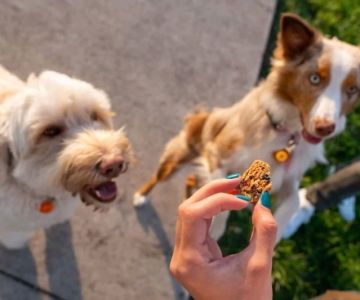- Understanding the Importance of Socializing Rescue Dogs
- Preparing Your Home for Pet Introduction
- Step-by-Step Guide to Socializing a Rescue Dog with Other Pets
- Real-Life Story of Successful Pet Socialization
- Expert Tips for Smooth Integration
- How Hidden Brook Veterinary Can Assist You
Understanding the Importance of Socializing Rescue Dogs
Rescue dogs often come from uncertain backgrounds, which can affect their confidence and social skills, especially around other pets. Socializing a rescue dog with other pets is essential to foster a harmonious living environment and prevent behavioral problems. When a dog learns to coexist peacefully with other animals, it benefits their emotional health and improves their overall quality of life.
This process is not simply about introducing pets but about building trust, reducing anxiety, and teaching appropriate social cues. Neglecting socialization can lead to fear, aggression, or withdrawal, making everyday life stressful for both the dog and the owner.
The Challenges Rescue Dogs Face
Many rescue dogs have experienced trauma, neglect, or limited exposure to other animals. These factors can cause fear-based reactions or unpredictable behaviors during initial meetings. Understanding these challenges helps owners approach socialization with patience and care.
Preparing Your Home for Pet Introduction
Before introducing your rescue dog to other pets, preparing your home environment is crucial. This preparation sets the stage for successful interactions and minimizes stress for all animals involved.
Creating Safe Spaces
Each pet should have its own safe space or retreat area where they can relax undisturbed. These zones provide a sense of security, allowing pets to adjust at their own pace without feeling threatened.
Removing Potential Stressors
Eliminate distractions and items that could trigger territorial behavior, such as food bowls or toys, during initial introductions. Keeping the environment calm and neutral helps reduce tension.
Step-by-Step Guide to Socializing a Rescue Dog with Other Pets
Introducing a rescue dog to other pets requires a gradual, thoughtful approach. Here is a detailed guide to facilitate this process effectively:
1. Initial Scent Introduction
Begin by swapping bedding or toys between the rescue dog and existing pets. This allows them to become familiar with each other’s scent without direct contact, reducing initial anxiety.
2. Controlled Visual Exposure
Allow the pets to see each other from a distance or through a barrier, such as a baby gate. Observe their reactions closely, rewarding calm behavior with treats and praise.
3. Short, Supervised Meetings
When both pets seem relaxed, arrange brief face-to-face meetings in a neutral space. Keep the dog on a leash to maintain control, and look for signs of stress or aggression.
4. Gradually Increase Interaction Time
Extend the duration and frequency of these meetings as comfort grows. Continue monitoring body language and intervene if tensions rise.
5. Reinforce Positive Behavior
Use positive reinforcement techniques such as treats, affection, and calm verbal cues to encourage friendly interactions and reduce fear.
Real-Life Story of Successful Pet Socialization
Lucy, a two-year-old rescue dog, was initially fearful of the resident cat in her new home. Her owner followed a careful socialization plan inspired by expert advice from Hidden Brook Veterinary. Through scent exchanges, gradual introductions, and lots of positive reinforcement, Lucy and the cat now coexist peacefully, even playing together on occasion.
This experience highlights how patience, consistency, and proper guidance can transform the dynamics between a rescue dog and other pets, fostering lasting friendships.
Expert Tips for Smooth Integration
Monitor Body Language Closely
Understanding subtle cues like tail position, ear posture, and eye contact helps you gauge comfort levels and prevent conflicts early.
Be Patient and Flexible
Every dog and pet combination is unique. Some may take weeks or months to adjust, so patience is vital.
Maintain Routine and Structure
Keeping feeding times, walks, and play sessions consistent provides stability, which reduces stress for all pets involved.
Seek Professional Help When Needed
If integration proves difficult, consulting behaviorists or veterinarians at Hidden Brook Veterinary can provide tailored strategies and support.
How Hidden Brook Veterinary Can Assist You
At Hidden Brook Veterinary, we understand the complexities involved in socializing a rescue dog with other pets. Our experienced team offers comprehensive guidance, from behavioral consultations to recommending specialized products that ease transitions. Whether you’re introducing a new dog to your family or managing multi-pet households, we provide personalized solutions designed to promote harmony and wellbeing.
For pet owners seeking expert advice and high-quality products to support rescue dog socialization, Hidden Brook Veterinary is your trusted partner. Reach out to us for help in creating a loving, peaceful environment for all your pets.












